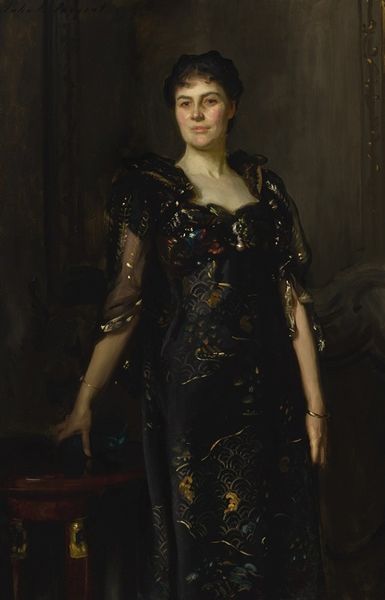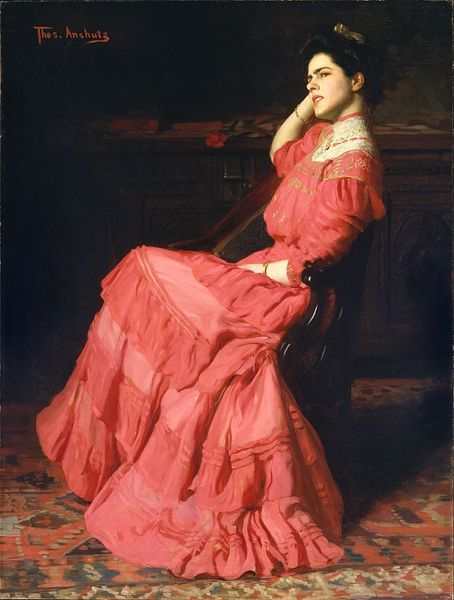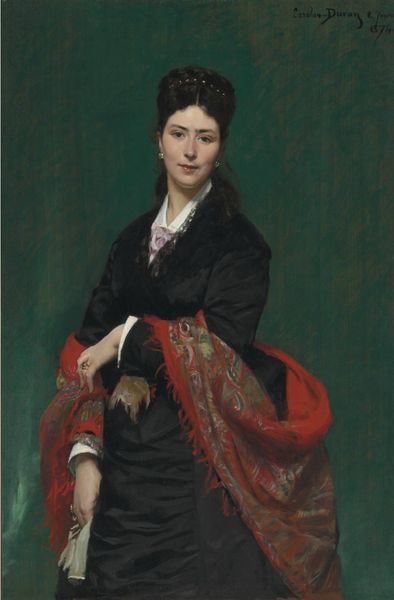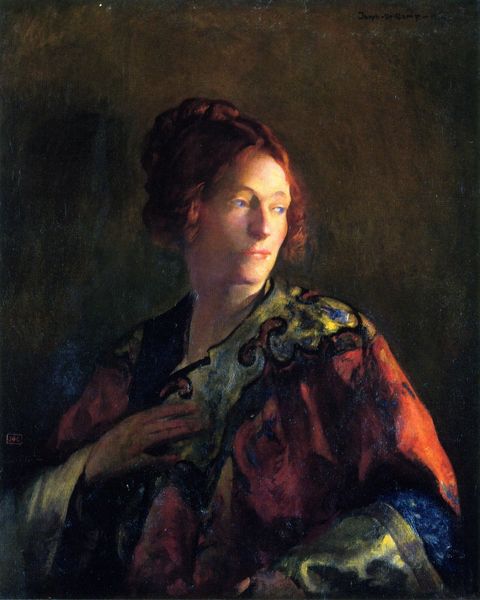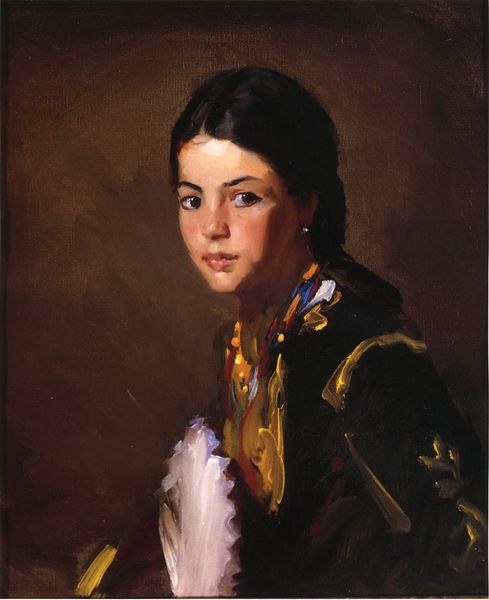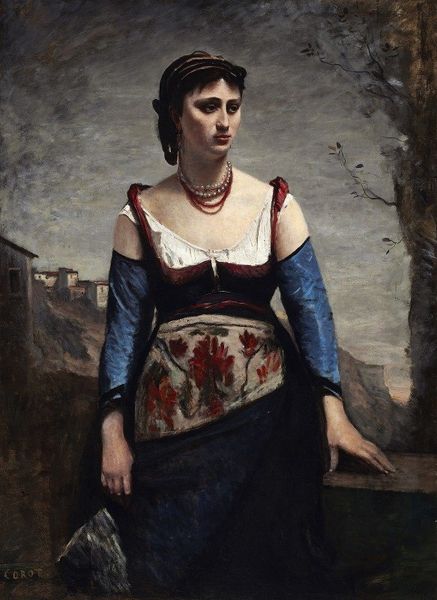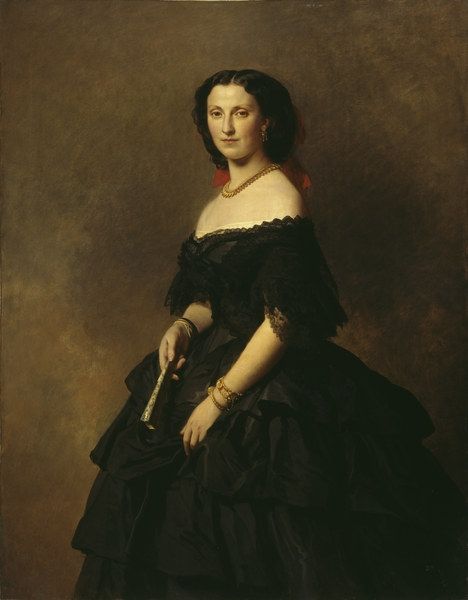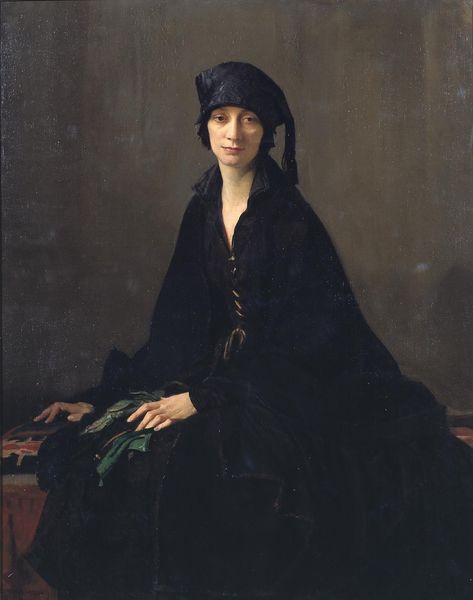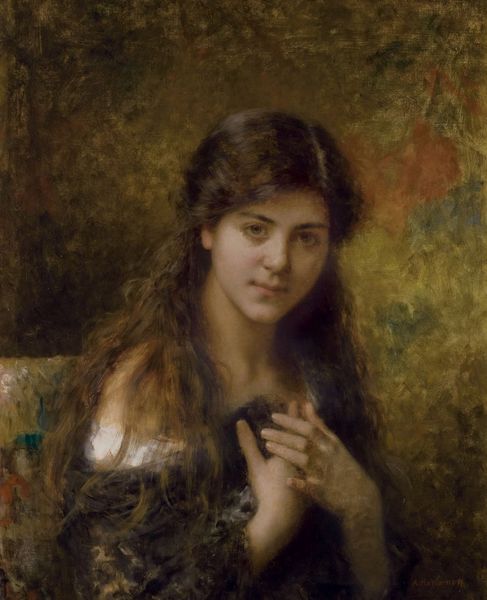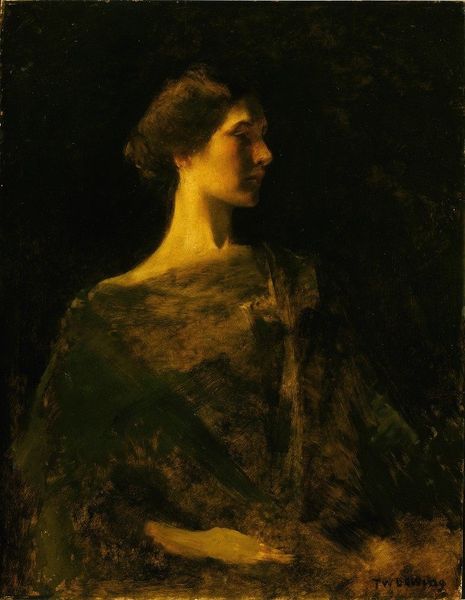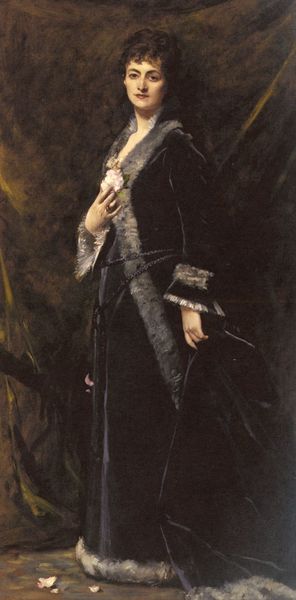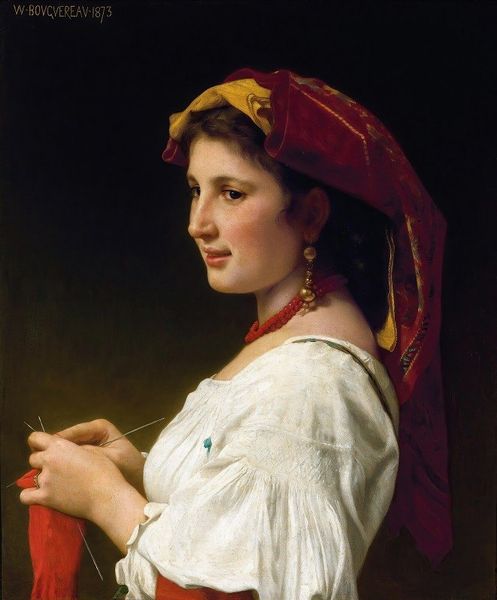
Copyright: Public domain
Curator: Here we have Henryk Rodakowski’s "Portrait of Leonia Blühdorn," an oil painting from 1871. It embodies the Romantic era, rendered through the Academic style. What’s your initial take? Editor: My immediate impression is that this portrait embodies restrained opulence, largely achieved via the sumptuousness and skillful application of fabrics. Curator: Precisely. Rodakowski, often overlooked in mainstream art history, painted during a period of intense social and political upheaval in Poland. How might Leonia's depiction resonate with that context? What's her position, considering that rich, dark material almost seems to swallow her? Editor: Note the tension between what’s highlighted, which is the sitter, and what is made with such mastery that could become the focus of the artwork if the gaze was directed to it. In the production of the cape, or cloak, with the rich textures, there’s labor and materiality to consider. Someone had to make that garment! Curator: Yes, we must consider how the means of production—the materials themselves—intersect with class and societal norms. But the portrait’s presentation cannot be separated from questions of representation and societal positioning; the dark tones could evoke a subtle critique of women's roles within the family. Her controlled composure could signal a yearning for autonomy during restrictive times. Editor: Her expression is rather neutral, almost defiant in the face of the darkness around her. But you’re right to address production value, because in commissioning the painting and that stunning shawl she makes herself into art. Curator: Exactly, it raises so many interconnected social issues – the dynamics of representation, women’s agency, and the very materials and labor inherent in artistic creation itself. It makes for such rich contemporary discussion. Editor: Indeed, it's a fruitful reminder to delve into art's complicated connections with social and political discourse, but also remember the value of the skilled hands that make the artwork so powerful.
Comments
No comments
Be the first to comment and join the conversation on the ultimate creative platform.
